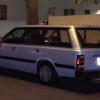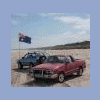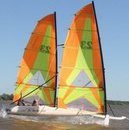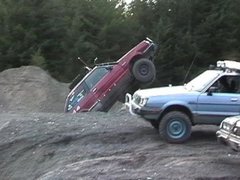Leaderboard
Popular Content
Showing content with the highest reputation on 11/16/18 in all areas
-
Thank you all you great guys out here on USMB - I couldn't have done it right with out you - probably would have messed it up. I wasn't ticking too bad, but now ZERO - and super quite overall! Also did water pump, hoses and seal on metal pipe that goes into pump. Sealed up some cracks in my air intake snorkel with RTV, fixed anything I found along the way and now it's super quite and smooth. No "bubbles and water fall" sounds coming out of coolant system. No scary stuff with the temperature almost going into danger before thermostat opens. Im pretty sure the last couple of days before the belt broke it had lost at least a tooth and jumped a tooth cause it was feeling out of balance when idling - that's the main reason I kind of why I thought it might be a waste doing this job - and I REALLY didn't want to tear it all the way down, I would have sold it or junked it. It really feels like I have a brand new rebuilt motor! To me it's amazing there is such a difference. AND NO OIL DRIPPING (yet) all over the bottom of the timing belts, which would spread into the exhaust pipe and start burning & smoking if on the freeway very long! It's almost like a dream... Thanks again2 points
-
The 25D has head gasket issues for one reason only - the bore diameter caused a reduction in the thickness of the cylinder liner support walls where the HG fire ring seats on the block. Due to the thickness of the composition graphite gaskets they started with in 1996 (because of piston height above the deck at TDC) there is insufficient rigidity provided by the cylinder head to prevent the cylinders from moving around due to thermal expansion and contraction and combustion chamber pressure.This movement abrades the fire ring against the block and head leading to pitting, which ultimately leads to failure. Number of heat cycles is the primary indicator of lifespan coupled with any overheating events that add further thermal stress loading. It is easy to see this because Subaru solved the problem - you only need to look at what they did to effect a solution. They changed the piston to allow a thinner head gasket, and they beefed up the block around the liners to make them more rigid. For turbocharged applications they incorporated liner gussets to help stop them from moving under high cylinder pressure and temperature. Also the open deck 1.8 and 2.2 engines do not have this problem despite having the same thickness HG as the earl 25D. Why? Because the cylinder liner support walls are WAY thicker due to smaller bore size. The engineers that designed the EJ never envisioned a 2.5 liter displacement when they modeled in on early computer systems in the mid 1980's. When new engineers were asked to increase the displacement they inadvertently caused a HG issue by the bore size change without considering what that would do to the rigidity of the cylinder. It was an engineering design mistake. Nothing more. Nothing you do or do not do as regards the thermostat location will have ANY effect on the HG "problem" associated with this engine. Want to solve it permanently? Resurface the block and the heads, Install 251 pistons, and use the 642 turbo head gasket. They will never blow again. GD1 point
-
You were right of course, I finally found all the marks and all 3 look lined up which explains why it runs so well. I'll be back when I get in a jam. Thanks1 point
-
For composite gaskets it wouldn't do much as they fail the rubber/graphite breaking down and eventually coming apart. Moving the thermostat to the top has the risk of it never opening if there's a pocket of air big enough to dry it out.1 point
-
Thanks for the input, I agree the tires are suspect. They look pretty new but still, who know what might be going on. There may still be other issues as well, I am going to check out the brake calipers and be watching and listening for issues with wheel bearings and CV axles.1 point
-
The factory VF2 or what ever you have from the EA82 will probably instantly boost then run out of puff in no time. Get an EJ spec turbo like a TD04. Cheers Bennie1 point
-
EA81s have gear driven valve train, internally. They are OHV. EA82s are belt driven overhead cam and mass plastic covering in front. My 1984 is an EA81 OHV. OHCs have 1 cam overhead per side. My EA81 has EA81 and I.D. # below it next to the distributor boss to the left, it that helps. I have a picture but computer/phone are not cooperating. https://en.wikipedia.org/wiki/Subaru_BRAT#Drivetrain1 point
-
I bought the car in non driving condition, so I don't know how it was doing before. I decided to put on my winter tires as a test, it made a dramatic improvement so I will be getting the tires balanced. Thanks for all the input.1 point
-
Fill the block first, thru the upper rad hose I have only worked on 4 Subaru's and I find that this method works for me. I know that the Subaru mech's at my local dealer use a special funnel but filling the block through the upper rad hose has always worked for me1 point
-
The CO2 color changing liquid kits NEVER work for Subaru's. Waste of time. Pull the heads - that's how you find the gasket leak on an EJ. If you have burped it, and it has a factory thermostat and radiator cap - and then you drive it and it overheats - the head gaskets are bad. GD1 point
-
My EA82 lasted for 257,000 miles with little or no maintenance before it finally blew a head gasket. I bought the car for the going rate of scrap at the time (about 5 years ago). I took the engine out and completely rebuilt it, pistons & rings, bearings, all new timing components, water pump, lapped the valves, etc. I have been driving it for 5 years now. It's clean and quiet and runs great. It gets good gas mileage too. It has enough power for what it is and it still has the original oil pump, hah. The SPFI is soon to be replaced with a multi-port Spyder setup. Congrats to you! Good work1 point
-
Well done. Now just wait for the EA82 naysayers to pipe up They are just an engine that gives and gives, then just once in a while deserves a freshen up which many have no time,patience or money for -so never find out Seen this time and again, done right gives owner joy once the cost pain is forgotten Once had a tight wad fighter pilot finally surrender to insistence his EA82 got new lifters along with his reseal and belt kit, water pump and hoses. Was ever so thankful for the result1 point
-
Don't be sorry, and yeah, sometimes the guys tend to be a little blunt.. us long timers are used to it, but we sometimes forget new folks are not, lol in all seriousness, the mod you are considering is not something even remotely needed on a daily driver. The correct thermostat, installed properly, will do more for you than putting all kinds of time & effort into something that is completely unnecessary. a little tip when filling your cooling system... Fill the block first, thru the upper rad hose.. take your time, and make sure you get the block completely full before putting the hose on the radiator, and then filling the radiator. If you have the correct thermostat installed, it will seep coolant through the jiggle pin hole, into the lower rad hose, pushing air out thru the radiator. having the nose in the air does help, but filling the block thru that upper hose works beautifully nearly every single time. I have owned several Subarus over the last 18 yrs - from an 89 GL wagon with the EA82, a couple of early-mid 90s Legacies with the EJ22, and currently a 2002 Forester with the EJ251. I have never had a problem with trapped air using the rad hose method of filling the cooling system.1 point
-
Did the t-stat, and still over heating. It passed the first short test drive, on Monday, after I installed it. I was in the woods hunting yesterday, when my son took it for a longer drive, and it FAILED! However, he said the gauge pegged out on hot, then within 30 seconds, it dropped back to normal. I thought may be an air bubble passed by the sender, but he drove it again, and it did the same thing, however, he said the upper hose didn't swell this time. As soon as I get home from hunting this afternoon, I'm going to break out the digital thermometer again and get a couple more actual temp readings from the upper hose, the cylinders around the water jackets, AND the sending unit its self. The plugs may have been a little lighter in color. The plugs have less than 100 miles on them. Not sure how long it takes to get a true reading. As far as the heads, I did not have them machined, since the engine had no top end issues, and ran great until it spun a bearing. Plus, I checked them as well as the block for flatness. And yes, multi layer gaskets were used.1 point
-
Happy to be of service. You can test this by using one of the other relays beside it, in the same clump of 4. You may lose a headlight, so this is a daylight-only test. The other relays are identical in every way. The next one to go will be the heater blower relay. If you can find one of these cars at the wrecker, grab all the relays under the dash, and keep them handy for the next time one dies.1 point
-
Agree with Texan... if it was not doing this before being parked for a while - first thing to check are the calipers - slide pins specifically. The caliper should move freely & smoothly on those pins. failing u-joint could also be a source of vibration. the other half just changed out the driveshaft on his 2006 due to a failing joint.. his was so bad he had a squeaking noise in reverse, but also had a vibration at certain speeds (would have to ask what speeds). both went away after the new shaft was installed.1 point
-
if it wasn't doing it before it was parked, I'd suspect a frozen caliper, maybe a failing u-joint, possibly tires if they are getting old. (they are all 4 identical right?)1 point
-
Just had this issue, and that is what mine was, did not get the sensor plugged in. it is buried under there on my 991 point
-
Don’t get a new car, just a new engine... like an EJ engine Cheers Bennie1 point
-
Ouch! That is half the cost it was new! I suspect your problem is with the fuel pump relay. They get old and flaky, and stop working. Often, they are temperature sensitive, although it is usually heat that makes them kick out. It is one of the relays in a group of 4 up under the dash board, above the ECU. All the relays in that bunch are the same, so you can swap one of the others in to test it. A quick and dirty fix is to run a wire directly from the battery to the red wire on the FP wiring harness. You can get to it under the back seat, inside the car. I ran like this for 4 months before I figured out what the problem was. The pump would work for awhile, then kick out. I would connect the wire, and carry on. This was when the relay was flaky, not failed. I could do this from the driver's seat. Good luck.1 point
-
There is no merit to doing this and ESPECIALLY not with a flex-hone. If you are going to do it, it needs done on a power hone machine with diamond hones and it needs to be a two-step plateau hone with an extremely fine finish. DO NOT TOUCH the cylinder walls. Got that? Your fears of ring seating issues are unfounded and based on 1970's era ring and cylinder technology. Which these engines are NOT. What is this "glaze" you speak of? What is it composed of and how did it get there? And what are you attempting to accomplish with roughing up the cylinder walls at random with gravel glued to wire spun up in a drill perfectly suited for mixing drywall mud? GD1 point
-
1 point
-
Hey have you tried the coil on plug ignition mod? I read some not so great things about them. Iam interested in the MSD 8239 coil that DOHCEJ22E posted about. I looked into it and MSD said it will not fit. I tried to get some info from MSD about how to make it work, but was like pulling teeth with them. Do you know if he did some kind of mod to make it work?1 point
-
On the other hand, you can lay down a bead, break for lunch, and then assemble the halves, since it won't start curing until mated. I don't know that stuff - will look into it (always nice to find a local disty). Gotcha. I normally only use assembly lube where the stickiness is really need to keep things from dropping, but get your point. Would a suitably viscous oil (e.g. 20W50) not work as well? And now that we're on the subject of lubes, I've seen mentions of using ARP Fastener Assembly Lube on the rod bolts in order to get more accurate torquing. What's your take on that vs. using regular engine oil (e.g. 10W30)?0 points
-
0 points









